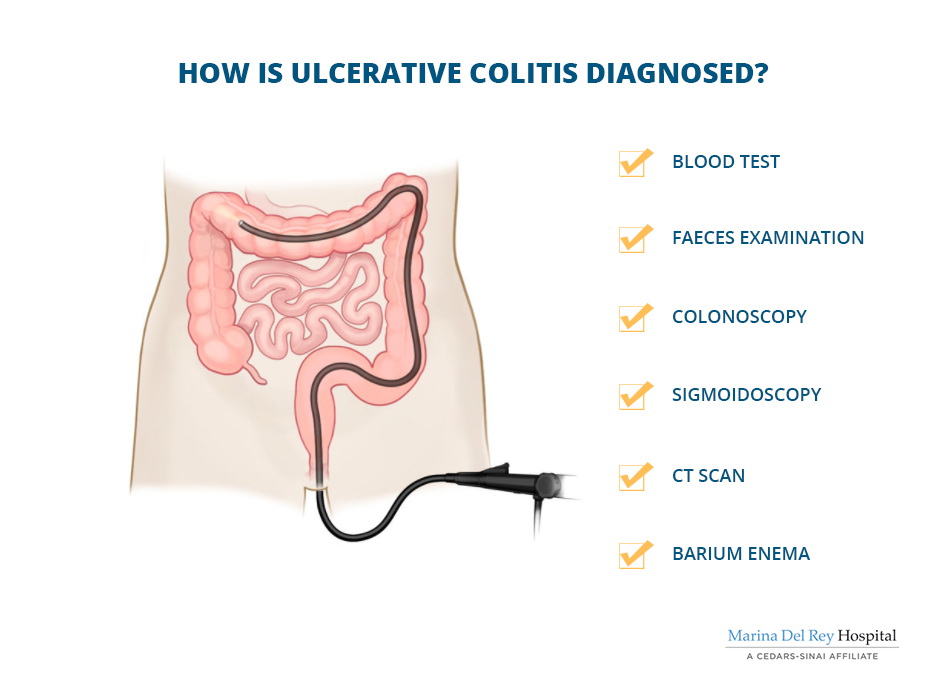Ulcerative colitis is diagnosed via a number of procedures.
The doctor will start with a stool sample, which will test for infections as well as bleeding.
The next favourite procedure is a scope, either an endoscopy and a colonoscopy or just a colonoscopy. Both use a tube with a camera to record your gastric plumbing.
The endoscopy goes from the top down. From your throat through the stomach and to the upper part of your smooth intestine. I can’t see the point but I think it is done to make sure that nothing is lurking, waiting to cause more problems.
The colonoscopy is of greater value here. It goes from the bottom up. Goes via the rectum into the large intestine, the colon. It is used to examine the ulcers the lining of the colon, check for ulcers and other damage.
A biopsy, a small sample of the tissue can also be taken just to rule out cancers etc. the sample is checked under a microscope to see if there are abnormal cells. the biopsies are taken during the scope examinations.
At one time a barium enema was used but I think with the advent of the colonoscopy this is not the favoured route anymore. It doesn’t provide much information.
A blood test will possibly also be taken. The value of that is debatable but the doctor is programmed to immediately “take bloods”.
Once all the test have been performed and the results are back from the pathology labs, your doctor will let you know what he diagnosed and then he will prescribe a treatment regime. Part of the treatment should include a probiotic. It probably won’t and if it doesn’t you should take anyway.
Recommended reading
Ulcerative colitis – What is it
Ulcerative colitis – Symptoms
Ulcerative colitis – Conventional Treatment
Ulcerative colitis – Safe Long Term Treatment

